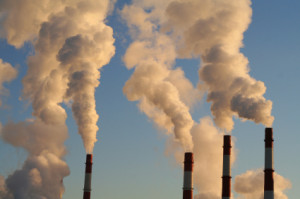Climate Change Fact Sheet
ENVIRONMENT, 7 Jul 2014
Earth Policy Institute – TRANSCEND Media Service
July 02, 2014
Stabilizing the earth’s climate depends on cutting carbon emissions fast.
Global emissions of carbon dioxide (CO2)—the principal climate-altering greenhouse gas—come largely from burning coal, oil, and natural gas.
- Coal, mainly used for electricity generation, accounts for 44 percent of global fossil-fuel-related CO2 emissions.
- Oil, used primarily for transportation, accounts for 36 percent of CO2 emissions from fossil fuels.
- Natural gas, used for electricity and heating, accounts for the remaining 20 percent of CO2 emissions from fossil fuel burning.
Worldwide, fossil fuel subsidies topped $620 billion in 2011, while renewable energy received just $88 billion in subsidies.
Since the Industrial Revolution, the planet has warmed by roughly one degree.
2013 marked the 37th consecutive year of above-average temperatures. Fully 4 billion people alive today have never experienced a year that was cooler than last century’s average.
If we continue with business as usual, burning ever more oil, coal, and natural gas, the global average temperature is projected to rise some 11 degrees Fahrenheit (6 degrees Celsius) by the end of this century.
In addition to more widespread drought and more numerous wildfires, climate change brings more extreme heat waves.
In the last decade, daily record high temperatures outnumbered record lows in the United States two to one, and that ratio is increasing.
Crop ecologists have a rule of thumb that each 1-degree-Celsius rise in temperature above the norm during the growing season lowers wheat, rice, and corn yields by 10 percent. Field tests show that this may be conservative.
This century, as waters warm and ice continues to melt, seas are projected to rise some 2 meters (6 feet), inundating coastal cities worldwide, such as New York, London, and Cairo, and agricultural hotspots, like rice-growing river deltas.
Earth Policy Institute’s Plan B shows the steps needed to cut global carbon emissions 80 percent.
Cutting carbon emissions involves shifting from fossil fuels to renewable sources of energy, dramatically ramping up efficiency, and protecting and restoring forests and other natural systems.
Data and additional resources available at www.earth-policy.org.
Research Contact: Janet Larsen (202) 496-9290 x14 or jlarsen (at) earth-policy.org
Go to Original – earth-policy.org
DISCLAIMER: The statements, views and opinions expressed in pieces republished here are solely those of the authors and do not necessarily represent those of TMS. In accordance with title 17 U.S.C. section 107, this material is distributed without profit to those who have expressed a prior interest in receiving the included information for research and educational purposes. TMS has no affiliation whatsoever with the originator of this article nor is TMS endorsed or sponsored by the originator. “GO TO ORIGINAL” links are provided as a convenience to our readers and allow for verification of authenticity. However, as originating pages are often updated by their originating host sites, the versions posted may not match the versions our readers view when clicking the “GO TO ORIGINAL” links. This site contains copyrighted material the use of which has not always been specifically authorized by the copyright owner. We are making such material available in our efforts to advance understanding of environmental, political, human rights, economic, democracy, scientific, and social justice issues, etc. We believe this constitutes a ‘fair use’ of any such copyrighted material as provided for in section 107 of the US Copyright Law. In accordance with Title 17 U.S.C. Section 107, the material on this site is distributed without profit to those who have expressed a prior interest in receiving the included information for research and educational purposes. For more information go to: http://www.law.cornell.edu/uscode/17/107.shtml. If you wish to use copyrighted material from this site for purposes of your own that go beyond ‘fair use’, you must obtain permission from the copyright owner.